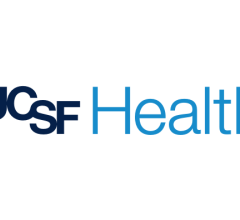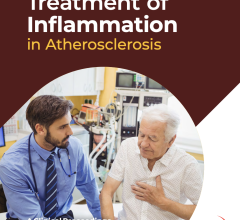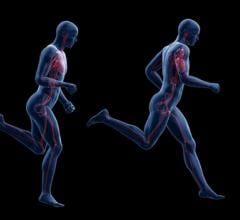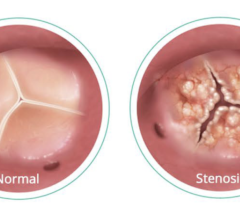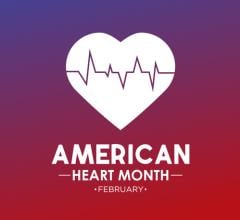
Shockwave Medical, Inc., developer of technologies for the treatment of cardiovascular disease, has announced the planned U.S. introduction of the Shockwave C2+ Coronary Intravascular Lithotripsy (IVL) catheter following approval by the U.S. Food and Drug Administration.
October 30, 2023 — Shockwave Medical, Inc., which develops technologies for the treatment of cardiovascular disease, has announced the planned United States introduction of the Shockwave C2+ Coronary Intravascular Lithotripsy (IVL) catheter, following approval by the U.S. Food and Drug Administration. The enhanced C2+ catheter made its U.S. debut at the Transcatheter Cardiovascular Therapeutics annual scientific symposium of the Cardiovascular Research Foundation (CRF), TCT 2023, held Oct. 23-26 in San Francisco, CA. The full commercial launch is planned for the beginning of November.
“The enhancements of Shockwave C2+ will be an added benefit of IVL for optimally treating complex calcium, including more diffuse disease, as well as nodular and thick, eccentric calcium,” said Richard Shlofmitz, MD, Chairman, Department of Cardiology, St. Francis Hospital in Roslyn, New York, who performed the first U.S. commercial case with Shockwave C2+. He added, “When additional pulses are added to the existing intuitive catheter design and simple-to-use system that are foundational to the success of Shockwave IVL, the result is an updated catheter that can enhance workflow and improve procedural efficiency.”
Shockwave C2+ is commercially available for the treatment of de novo coronary artery disease in the United States, Europe and select other geographies, according to the company, which reports the catheter provides 50 percent more pulses per catheter than the Shockwave C2 catheter that was approved in the U.S. in 2021.
Clinical Research Validates Utility of IVL in Complex Nodular and Eccentric Calcium
Additionally, in recent weeks, new Shockwave Coronary IVL publications have confirmed the safety and efficacy across multiple calcium morphologies, according to a news release issued Oct. 19 detailing the published outcomes, and reported by DAIC (see related content below). In doing to, the company announced that two new publications reported excellent and consistent outcomes with coronary intravascular lithotripsy (IVL) in both nodular and eccentric calcium. The publications each reported separate patient-level pooled optical coherence tomography (OCT) sub-analyses of the company-sponsored Disrupt CAD clinical studies.
“While the majority of the robust, core-lab adjudicated evidence supporting coronary IVL to date has studied concentric calcium, we are beginning to see a shift in evidence reinforcing IVL use across all calcium morphologies, both in retrospective analyses and ‘real-world’ prospective registries,” said Keith D. Dawkins, MD, Chief Medical Officer of Shockwave Medical. He added, “This new evidence showing the consistency of IVL confirms that this platform technology has a critical role to play in not just concentric calcium, but in modifying challenging coronary calcium across all morphologies – whether concentric, eccentric, nodular or mixed.”
IVL in Eccentric Calcium
Published in Circulation: Cardiovascular Intervention and titled, “Impact of Calcium Eccentricity on the Safety and Effectiveness of Coronary Intravascular Lithotripsy: Pooled Analysis from the Disrupt CAD studies,” the eccentric analysis divided individual patient-level data (N=230) analyzed by an independent OCT core laboratory into quartiles from eccentric to concentric based on maximum continuous calcium arc.
“IVL was initially adopted in clinical practice because of its ability to modify concentric calcium in a safe and predictable manner, and we are now seeing the utility increase as the consistency of the safety and efficacy outcomes related to IVL expand across calcium arcs,” said Dr. Ziad Ali, MD, DPhil, Director of the DeMatteis Cardiovascular Institute at St Francis Hospital & Heart Center in Roslyn, NY, USA, and first author on the publication. Ali added, “This shift in clinical practice has been key to addressing the limitations of atherectomy technologies in modifying eccentric calcium due to wire bias and the concerns with perforations associated with high pressure balloons in eccentric lesions at the interface between the calcium and the healthy tissue. With IVL, we now have a tool that can modify the eccentric calcium and increase the vascular compliance to greatest effect while minimizing procedural risk.”
IVL in Nodular Calcium
Published in JACC: Cardiovascular Interventions and titled, “Safety and Effectiveness of Coronary Intravascular Lithotripsy for Treatment of Calcified Nodules,” the patient-level pooled analysis from the Disrupt CAD studies was the first investigation of IVL in calcified nodules, examining 54 nodules found within 248 lesions (22%) analyzable by OCT. In lesions with calcific nodules, IVL was found to be highly effective in modifying the calcium prior stent implantation, reducing stenosis to a residual area of less than 15 percent with an acute gain of 1.8 mm2 in a safe manner with no major procedural complications.
“These new acute data with IVL are very encouraging and reconfirm the safety of IVL with no procedural complications in lesions with calcific nodules, which is generally a high-risk setting, however, there is still a lot to learn about this challenging calcium morphology to reduce long-term events associated with calcific nodular protrusion into the stent,” said Dr. Ali, the first author on the publication. “Given the relatively low prevalence of nodules, it has been challenging to perform large prospective controlled studies. The collection of more ‘real-world data’ in nodules across calcium arcs with intravascular imaging can help determine the optimal treatment algorithm – whether standalone IVL or IVL with concomitant technologies – for lesions with calcified nodules, so that we can improve both short- and long-term PCI outcomes.”
Find more TCT23 conference coverage here
Learn more at www.shockwavemedical.com and www.neovasc.com
Related content:


 May 02, 2025
May 02, 2025 


